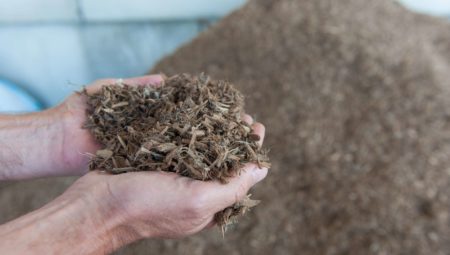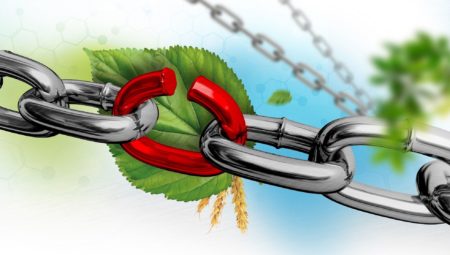And yet, the government of the Netherlands has already had a vision of the bio-based economy since 2007 (‘Closing the chains’). Since 2013 it has also had an idea of how much the circular and bio-based economy can yield in hard money, thanks to the TNO report ‘Opportunities for a circular economy in the Netherlands.’ Doctor Ton Bastein is one of the scientists at TNO who worked on this report and is still involved in the evaluation of the government policy and the Transition Agendas. ‘Recently I heard unofficially that it was getting close to time to update the report from 2013,’ he says. ‘I cannot imagine that it will lead to very different outcomes as far as economic opportunities are concerned. Some things are changing fast in society, but others are not, and I do dare to say that our analysis from then is still valid now.’
In that report and in the context of circularity, TNO zoomed in on available biotic residual substances, indicated the streams they lead to and the value they represent. ‘Much of our residual streams is already used in a resource-efficient way. Possibly, as a result of increased production and the use of biogas or forms of biorefinery, we would be able to create a higher added value than has already been created. At the time we already estimated it to be three billion euros. And you could add another billion euros to that. It seems like a lot, but when you consider that it is shared across 40 residual streams, it shouldn’t be too difficult.’
Nationwide Programme
In that sense, it could be time to speed up. The Nationwide Circular Economy Programme 2050, which was released last year, aims at a fully circular economy by 2050. As Bastein points out, it is easy to write that, but not easy to get a feeling of what it actually means. ‘I don’t think that anybody can picture what fully circular implies. How would it be different to now? What problems do we hope to solve with it? What goals are we aiming at? TNO is closely involved in the evaluation of the Nationwide Programme and the ensuing transition agendas. I myself am closely monitoring this, to see how those programmes land in practical objectives and then in actions which the stakeholders have thought up to achieve those objectives. But when you get round the table with people and ask what objectives we want to achieve in practical terms, you hear nothing for a long time.’
The self-evident higher objective, of course, is stabilising the climate by reducing the CO2 emissions and bringing an end to fossil fuels. ‘I also support that. The government has made the climate issue its primary target, and this does not concern circularity in itself but the contribution it makes to what you want to achieve. As a country we have committed ourselves to reducing CO2 emissions. You can try in that case to analyse what the Nationwide Programme actually contributes to those nationally set objectives.’
TNO recently sent a draft of the programme evaluation to the ministries involved. ‘We give a cautiously positive estimate of that contribution. That estimate is higher than what is stated in the coalition agreement, but it does reflect the entire issue which is stated in it. For example, we find that combating litter at the instigation of state secretary Van Veldhoven has become a very dominant issue, while in the margin it mainly has to do with the environment and not directly with CO2 emission reduction through circularity.’
CO2 gain not transparent
On the other hand, it is not always possible to point out the CO2 impact of measures clearly. ‘If you no longer take the used plastics to the incinerators but make high-quality different products from them, that delivers something in terms of CO2. But when biotic residual streams are refined, the CO2 gain is not that transparent at all. It is wonderful that we create high-grade protein from this low-grade material, but in terms of emissions it is possibly more or less neutral. Recently we made an analysis, together with colleagues from Wageningen, to extract relatively pure, high-grade proteins from biotic residual streams, such as vegetable scraps waste. We focused on the business case elements. When you see what activities are required to get that protein out of the biomass while still ending up with residual material, it is quite possible that the CO2 gain is rather low, or even negative.’
According to Bastein, it is not always clear either that the processing of bio residual streams into materials or chemicals is of higher value than when they are used as fodder. ‘As a source of protein for the livestock herd. That is already happening on a huge scale. Certainly, when you do something with raw material streams that already were not going to the incinerator, you will have to really do your best to get more added value out of them.’
According to the researcher, the contribution to CO2 reduction only becomes relevant if value is created from streams that would otherwise possibly end up in the incinerator. ‘One example is the production of gas from manure and sewage sludge; that creates economic and ecological value in the form of biogas as a substitute for natural gas. Another example can be found in an initiative like Biorizon, where bio-aromatics are produced from bio residual substances, for instance from household or sewage waste that would otherwise be incinerated. I believe that these are extremely meaningful activities.’
Lost from sight
What definitely justifies the transition to bio-based raw materials is their effect on raw material security. The Nationwide Programme stipulates the goal of a 50% reduction in metal, mineral and fossil in 2030, but no reduction of biomass. ‘A number of the ambitions of the government even lead to an increase in the use of biotic raw materials. So in that sense, the use of more biomass results in a lessened reduction of the material footprint.’
Bastein is struck by the fact that scarcely anything is said about the reliability of supply of biotic raw materials. On a European level it definitely seems as if only the mining industry and technical materials play any role in the economy. While for the Dutch economy, a number of biotic raw materials are perhaps just as important, because the export position relies on them. Why is that? ‘The DG GROW (editor’s note: Directorate-General GROW Internal Market, Industry, Entrepreneurship and SMEs) of the European Commission finds that technical raw materials are very important, but biotic raw materials come under the DG AGRI (editor’s note: Directorate-General Agriculture and Rural Development), which has different priorities. I also notice this in documents from consultants: the biotic aspect seems to be lost from sight, it is only about houses, cars and mobile telephones.’
Fuzzy
A consequence of the Nationwide Programme for a circular economy was the submission by five transition teams of their transition agendas to the state secretary of Infrastructure and Water Management, Stientje van Veldhoven, on 15 January: Biomass and food, Plastics, Manufacturing industry, Construction sector and Consumer goods. What is the basis of this grouping? Bastein: ‘This was thought up by the cooperating ministries in 2016. It is not all that illogical when you look at the world around us, but it is also fuzzy and slightly imbalanced: biomass is a raw material, the manufacturing industry is an industry that also uses biomass, plastics is a value chain that also makes bioplastics and consumer goods should have been about the improvement of the value of residual substances but then also targets plastics and other matters. Now that the agendas are here, we must address the gaps and overlaps that have arisen.’
This does not make the task of evaluating the agendas any easier for TNO. The practicality also differs greatly, is Bastein’s first reaction: ‘The part from the transition table Biomass and food is a solid, substantive, quantitative analysis of aspects you should tackle: the management of carbon, phosphate and nitrogen. It is an in-depth, scientifically substantiated text. The other four transition agendas do not all reach the same level of practicality.’
What are the next steps to take? Bastein: ‘The analyses of these transition agendas have aimed for the time being at the correlation of the objectives unearthed and the identification of the gaps in that correlation. A second investigation we have just completed is on the impact of the formulated objectives on the CO2 emissions for the Netherlands. A third analysis we intend doing is examining the power and direction of the numerous actions which have been mentioned. To what extent are they in line with the objectives? And if one were to perform these actions, when would that deliver a result? And what does that mean with respect to the global aims that the Netherlands strives for? These kinds of investigations will all help form the government’s position which will be sent to the Lower House before the summer.’
Authoritative dossier
The question remains: is there currently a coherent government policy on the circular and bio-based economy? In any case, these are matters that are now covered by an authoritative dossier, namely the Climate Agreement. That is important, for example for obtaining support and/or funding. Bastein: ‘It is sensible to finally unite all those different dossiers for bio-based economy, food, energy and sustainability. Because those developments have been incorporated in the coalition agreement, it is very clear that circularity is an important issue for the government. But authoritative or not, it does not yet mean that money will be freed up for it.’
‘Of an entirely different order is the fact that we all believe something about sustainability, but at the same time consume far too much and thus cause a lot of emissions. Saying that we strive for sustainability and circularity is inconsistent with striving for GDP growth. That is the elephant in the room in many of these discussions. And we do not talk about it.’



